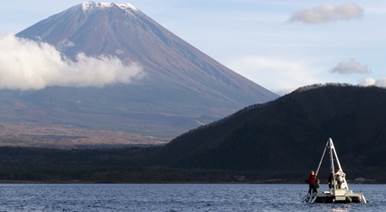2024-09-10 マックス・プランク研究所
<関連情報>
- https://www.mpg.de/23443589/artificial-muscles-propel-robotic-leg
- https://www.nature.com/articles/s41467-024-51568-3
電気油圧式筋骨格ロボットの脚が、機敏で適応性が高く、しかもエネルギー効率に優れた運動を実現 Electrohydraulic musculoskeletal robotic leg for agile, adaptive, yet energy-efficient locomotion
Thomas J. K. Buchner,Toshihiko Fukushima,Amirhossein Kazemipour,Stephan-Daniel Gravert,Manon Prairie,Pascal Romanescu,Philip Arm,Yu Zhang,Xingrui Wang,Steven L. Zhang,Johannes Walter,Christoph Keplinger & Robert K. Katzschmann
Nature Communications Published:09 September 2024
DOI:https://doi.org/10.1038/s41467-024-51568-3

Abstract
Robotic locomotion in unstructured terrain demands an agile, adaptive, and energy-efficient architecture. To traverse such terrains, legged robots use rigid electromagnetic motors and sensorized drivetrains to adapt to the environment actively. These systems struggle to compete with animals that excel through their agile and effortless motion in natural environments. We propose a bio-inspired musculoskeletal leg architecture driven by antagonistic pairs of electrohydraulic artificial muscles. Our leg is mounted on a boom arm and can adaptively hop on varying terrain in an energy-efficient yet agile manner. It can also detect obstacles through capacitive self-sensing. The leg performs powerful and agile gait motions beyond 5 Hz and high jumps up to 40 % of the leg height. Our leg’s tunable stiffness and inherent adaptability allow it to hop over grass, sand, gravel, pebbles, and large rocks using only open-loop force control. The electrohydraulic leg features a low cost of transport (0.73), and while squatting, it consumes only a fraction of the energy (1.2 %) compared to its conventional electromagnetic counterpart. Its agile, adaptive, and energy-efficient properties would open a roadmap toward a new class of musculoskeletal robots for versatile locomotion and operation in unstructured natural environments.



